Standing at the back of the boat as we cruise in deep water off the West Australian coast, I’m on the verge of a panic attack. Ten of us wait nervously for the whale shark that is swimming towards the boat. We shuffle around awkwardly in our flippers, trying not to trip over each other, masks tight around our faces. After exploring Western Australia’s outback in Broome and the Kimberley region, swimming with whale sharks around Ningaloo Reef near Exmouth is quite a contrast.
Contents
Swimming with whale sharks – Ningaloo Reef
The experience
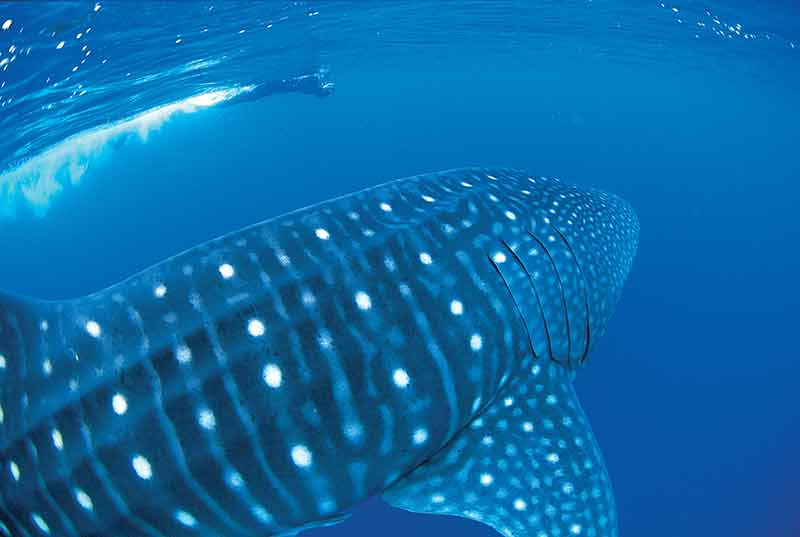
The boat ahead of ours has just dropped a group of swimmers into the water and from a distance, their heads bob up and down in the ocean.
I watch as the boat pulls away, leaving them in the oncoming path of the whale shark.
Is swimming with whale sharks scary?
Well, if jumping into the ocean scares you then swimming with whale sharks is certainly a bit of a challenge.
My heart drops when our group leader tells us to move to the back of the boat.
Staring dubiously at the 2m swells, I realise I’m one step closer to jumping into the ocean to swim with whale sharks.
See a range of whale shark tours here
How It Works
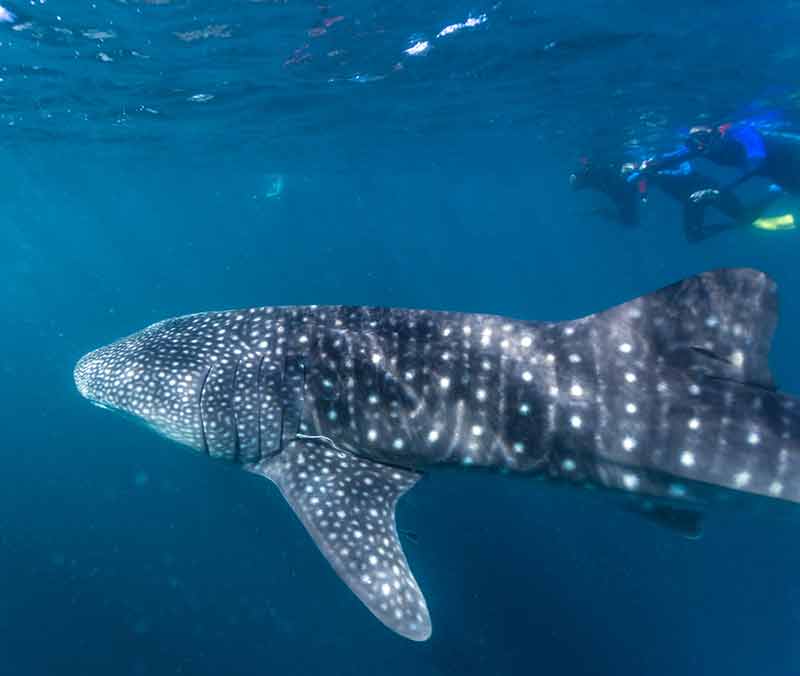
When swimming with whale sharks out of Exmouth, only ten people are allowed to swim with the whale shark at a time.
With a number of whale shark boats operating in the area, how it works is the whale shark boats form a line in the path of an oncoming whale shark.
The first boat is required to maintain a distance of 30m from the whale shark, the second, 250m and the others at least 400m.
Each boat has to drop off a group of swimmers quickly before being required to move away from the path of the whale shark.
Who can swim with whale sharks?
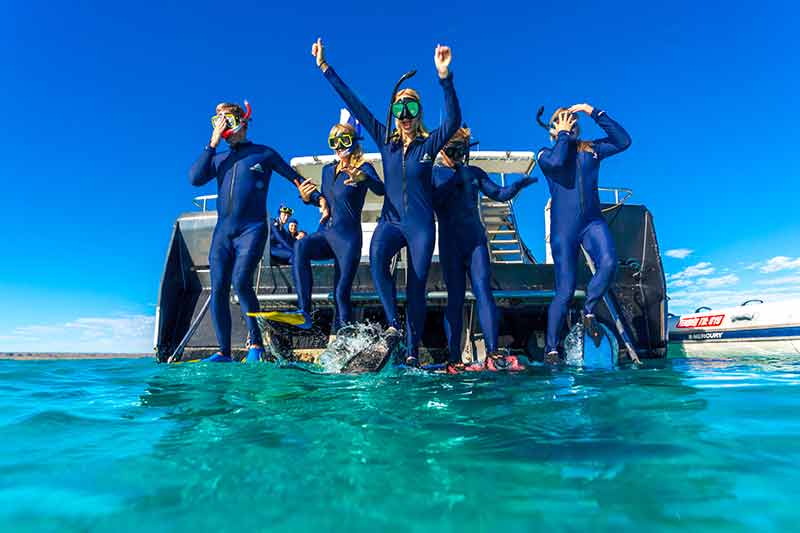
You don’t need to be a strong swimmer to swim with whale sharks but unlike swimming with humpback whales (which is usually done close to the boat), a whale shark swim is in open water and you do need to be able to stay calm.
Most whale shark tour operators will do a test run to assess the swimming and snorkelling skills of the group.
I had always believed myself to be a competent swimmer, that is until our practice swim when the boat stopped some distance offshore and a staff member pointed to a patch of coral reef.
I eagerly jumped in and swam strongly (or so I thought) towards the coral but I didn’t get very far against the strong current.
Worn out, with a cramp in my leg, I was dragged back to the boat hanging onto a pink pool noodle.
A real confidence booster that was.
After the test swim fiasco, our tour leader assured me the conditions where we would be doing the actual whale snark snorkelling would be much calmer.
But from the back of a boat, 2m swells look anything but calm.
What has my heart pounding out of control is the fear of being left in the middle of the Indian Ocean and I’m also slightly worried about what else might be lurking in the water.
Whale shark facts
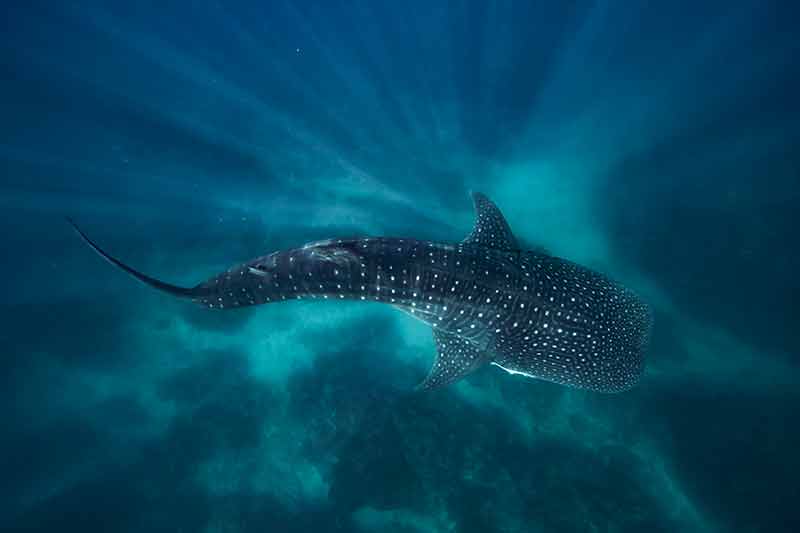
1- Whale sharks are gentle
There’s no need to be scared of whale sharks as they are gentle and non-predatory.
2- Whale sharks eat krill
Whale sharks have large mouths to eat krill and plankton but they will also consume small fish if necessary.
They have around 3000 teeth, which they don’t use to eat, and can feed vertically while standing on their tail.
3- Whale sharks are not whales
Whale sharks are a type of shark (a member of the Rhincodontidae family of sharks) and they are the largest fish in the world measuring up to 40 feet/12m and weighing up to 20 tons.
Swimming with whale sharks is a completely different experience compared to swimming with whales, which are mammals that interact intelligently with humans.
4- Whale sharks and can live to over 100
Whale sharks usually live alone and breed with multiple partners.
They sometimes travel with schools of tuna and small fish will often hitch a ride on a whale shark by clinging on to the whale shark’s body or inside its mouth.
5- Whale are ovoviviparous
Whales sharks gestate in eggs inside the womb and females become pregnant with hundreds of pups at once but will birth several pups over a long period.
The survival rate of pups is low and only 10% survive to become mature whale sharks.
Where to go whale-watching:
- Whale watching in Hervey Bay
- Whale watching in Victoria (British Columbia)
- Whale watching in Juneau (Alaska)
Ningaloo Marine Park
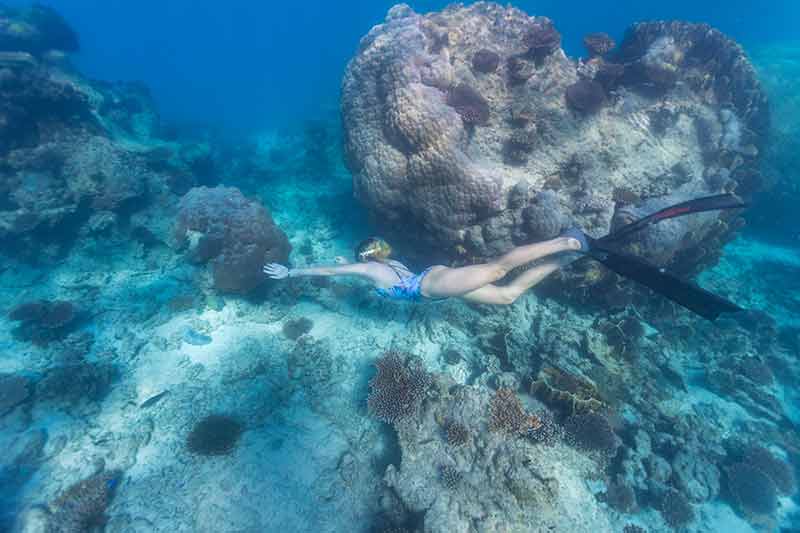
Ningaloo Reef is one of the best places to swim with whale sharks as these solitary fish seem to congregate in large numbers when they are in this region.
Ningaloo Marine Park is teeming with humpback whales, dolphins, turtles, dugongs, colourful tropical fish and manta rays.
Tiger sharks and hammerhead sharks have been spotted in these waters but our tour leader assures us they have never been a problem with humans being eaten before.
I feel some consolation I’m not the only one having second thoughts but I’m sure I look as green as the English backpacker shivering next to me.
The young guy has had a change of heart and shuffles his flippers awkwardly away from the edge of the boat mumbling something about the weather.
I’m about to do the same when our skipper screams “Go! Go! Go!”.
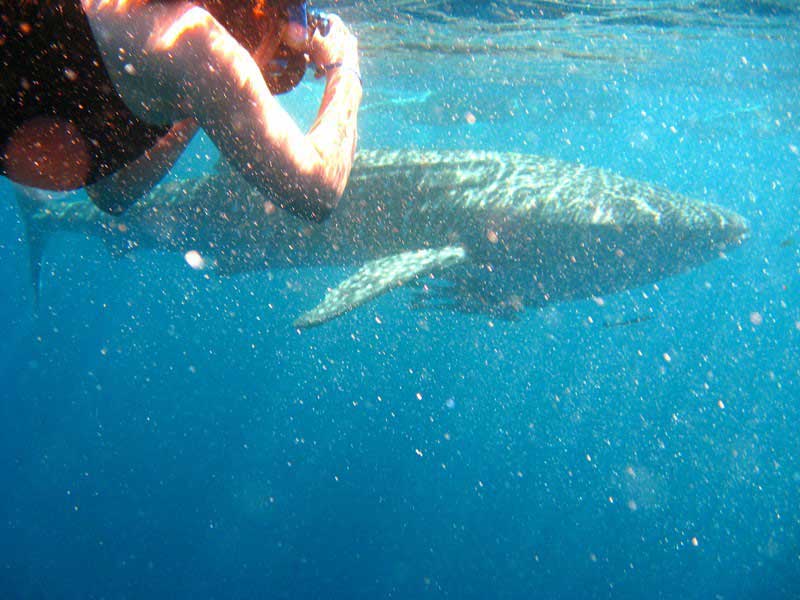
It’s the signal to jump into the water and swim to the side.
My brain screams NO but my body seems to have a mind of its own and I fly off the back of the boat hitting the water with a slap.
In the heat of the moment, I forget to breathe out and salty seawater floods the back of my throat.
Now I’m coughing, spluttering and trying to drain the water from my mask with my right hand while my underwater camera dangles off my other wrist.
Meanwhile, the back of the boat gets smaller and smaller.
Before I have time to panic (about being left in the middle of the ocean), I hear screaming.
For more WA experiences, read:
Whale shark wow moment
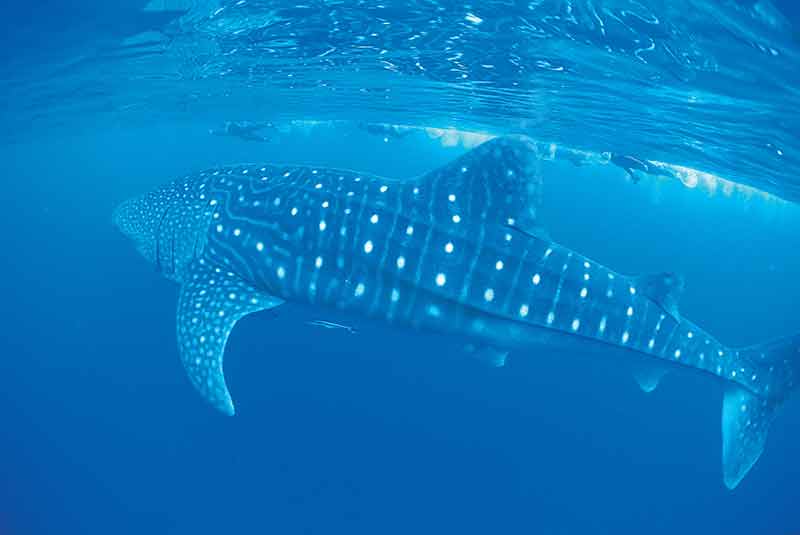
It takes a few moments before I realise the guide is frantically yelling at me to swim towards her.
“Look down, look down,” she shouts.
I put my face into the water, seeing nothing at first.
Then suddenly a broad, flattened head appears out of the blue boring down on me.
Having a whale shark bump into you is a mistake as they get frightened and will disappear into the deep.
What’s scarier is the thought of what the 120 swimmers in six boats who have paid around $400 each to swim with a whale shark would do to you for scaring it off.
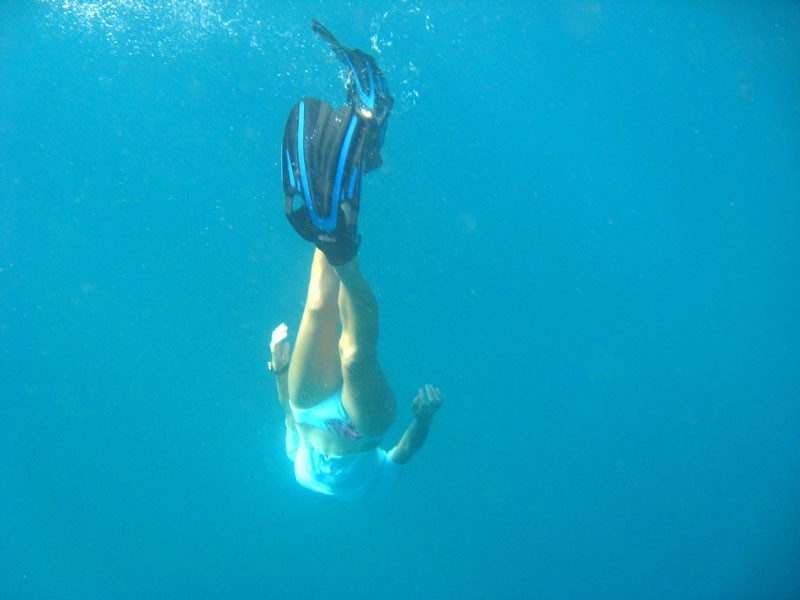
I flap both arms and legs frantically to get out of its trajectory, finding myself in a group of three swimmers doing a whale shark tango with arms, legs and flippers everywhere.
The whale shark continues to veer towards us and I’ve just about given up trying to keep out of its way when it suddenly switches direction and swims past.
With a burst of Olympic energy, I start swimming after.
A blur of dots and stripes rockets past and I manage to get a good glimpse of its tail (unless you’re Ian Thorpe, as soon as you see the tail you may as well stop swimming as you’ll have no hope of catching up).
I tread water and wait for the boat to pick me up.
Back on board, there are whoops and cheers all around.
We do this four more times: jump, splash about frantically, attempt to swim alongside, watch the tail disappear.
I’m envious of our guide’s tales about the 12m whale shark she swam with the week before and the six whale sharks that appeared together in the same area.
But it doesn’t really matter, now I have bragging rites and my own whale shark tale to tell.
Have you?
Whale Shark Season In Exmouth
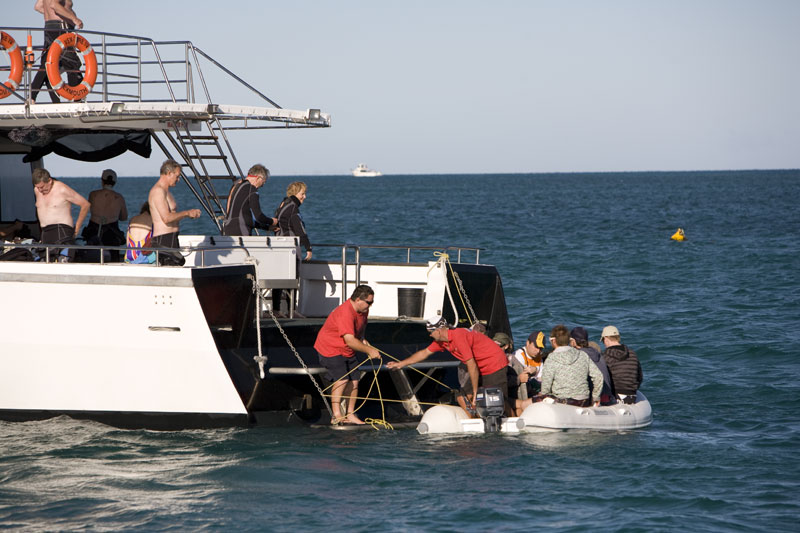
The whale shark season at Ningaloo Reef runs from March to September each year.
Whale sharks are listed as vulnerable to extinction and you can assist with whale shark research by submitting photos which show distinctive patterns and scarring or by donating.
The species is vulnerable to human-created pollution, such as plastic and trash, and are hunted for their fins for traditionaChinesese medicine and shark fin soup.
Read these posts for more ocean experiences
- Diving in Komodo Islands
- Diving in Tasmania
- Diving With Sharks In Fiji
- Swimming With Crocodiles in Australia’s Darwin
- Swimming With Whale Sharks in Ningaloo Reef
- Swimming With Whale Sharks In Tonga
Exmouth whale shark tours
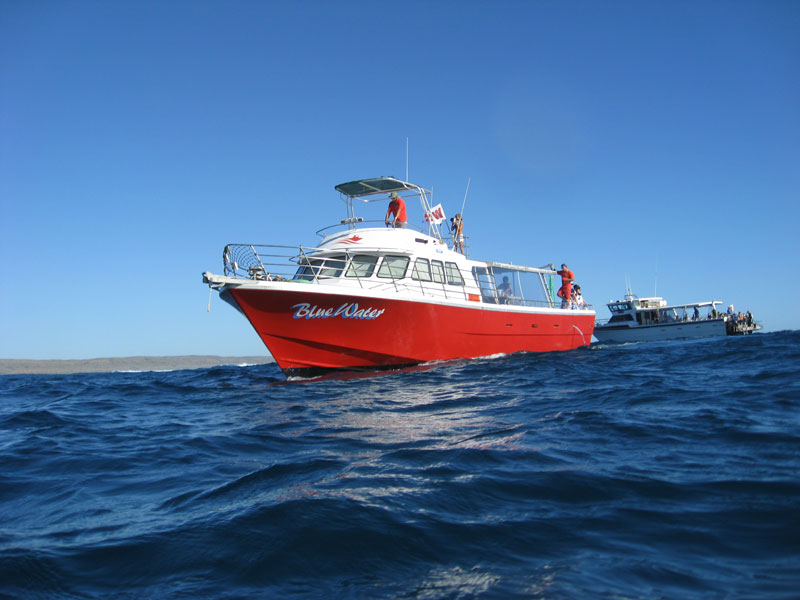
Most whale shark tours at Ningaloo Reef will include transfers, morning and afternoon tea, buffet lunch and snorkelling equipment.
Check out this list of whale shark tours
Where to stay in Exmouth
Novotel Ningaloo Resort is a luxury hotel on Sunrise Beach with studio, two- and three-bedroom apartments and one- and two-bedroom villas.
Compare prices of hotels in Exmouth here
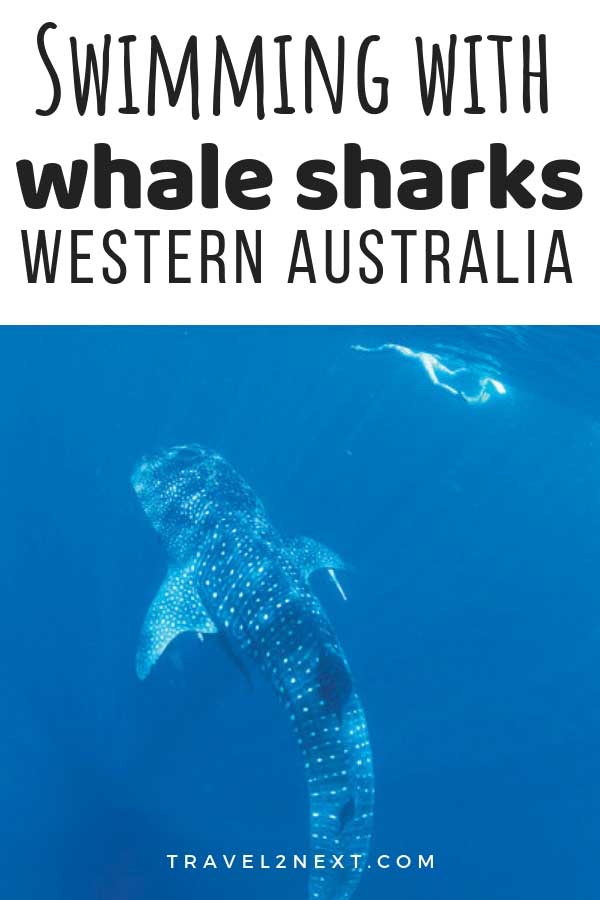
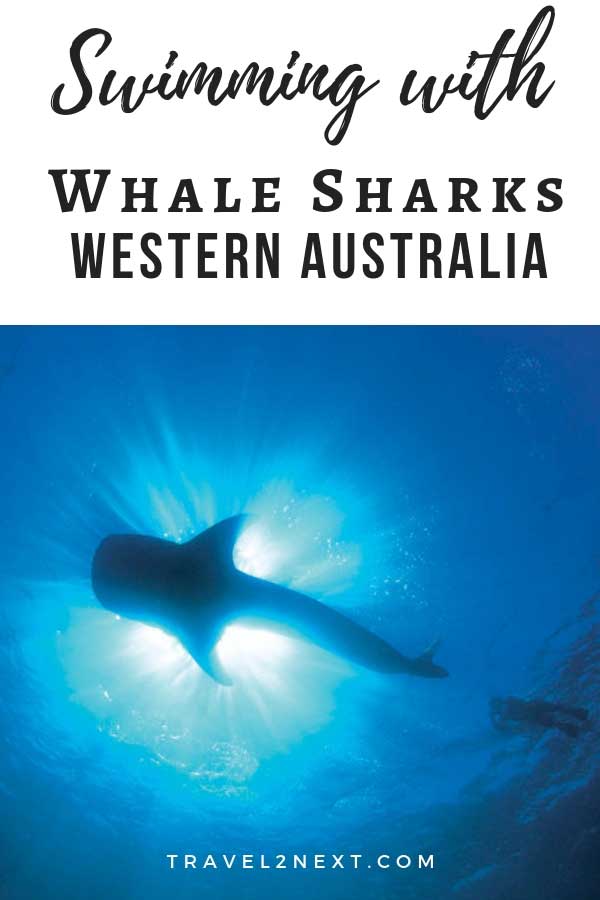
Plan Your Trip

Rent A Car – Find the best car rental rates at Discover Cars. They compare car hire companies to provide you with the best deal right now.

Find A Hotel – If you’re curious about this article and are looking for somewhere to stay, take a look at these amazing hotels.





